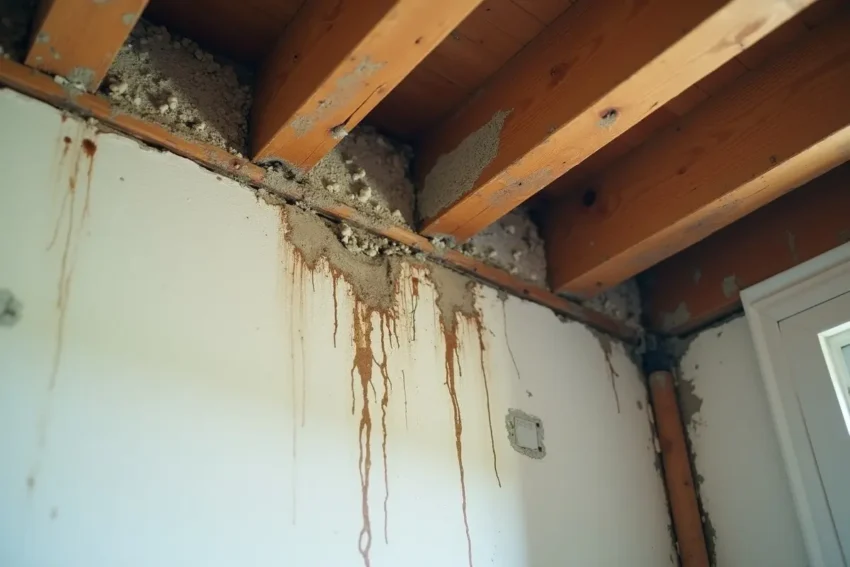No one likes the surprise of a water leak, especially when it’s hidden behind walls or under floors. It can cause damage, hike up your water bills, and lead to mold if left untreated. But what if you could catch these sneaky leaks before they cause major trouble? You can, and it’s easier than you might think—if you know what to look for.
Unexplained Increase in Water Bills
Have you noticed your water bill creeping up for no clear reason? While seasonal changes or increased water use can bump up the cost, a steady rise that doesn’t match your consumption could point to a leak.
A hidden leak might be slowly draining water around the clock, adding dollars to your bill each month without you realizing it. Compare your past water bills. If you’re seeing a consistent uptick without a change in your water habits, it’s time to contact experts like https://callmilestone.com/ so they can investigate.
Musty Smell or Damp Spots
Does your house smell musty or damp, even after cleaning? This could be a strong indicator that there’s moisture hiding somewhere in your walls, ceiling, or floors. Water from a hidden leak can accumulate in places where it shouldn’t be, leading to mildew and mold.
If you’ve noticed damp spots on your walls or floors, that’s a huge red flag. These spots might look like small patches of discoloration, and they’re often cool to the touch. Even if the spot isn’t wet, the presence of mold or a musty smell should never be ignored.
Discolored or Warped Walls and Ceilings
Water that’s slowly seeping behind walls can cause discoloration or warping. If you see brown or yellow stains on your ceiling or walls, especially in areas where plumbing runs through, it’s a strong sign that water is leaking inside.
Warping is another tell-tale sign. Look for bubbling, peeling paint, or buckling drywall—these indicate that water has been absorbed into the material. If your walls or ceiling feel soft to the touch in certain areas, it’s time to call a plumber.
Low Water Pressure
Has your water pressure dropped for no apparent reason? While there are many reasons for low water pressure, a hidden leak could be one of them. When water is escaping from your pipes, less of it is making it to your faucets, showers, or appliances.
If you’ve noticed a gradual decline in pressure, especially when using multiple fixtures at once, this could indicate a leak in your plumbing system. The water is essentially escaping before it ever gets to where you need it.
Unusual Sounds
Ever hear water running when no one is using it? That sound might not be your imagination. Plumbing leaks often create subtle noises that are easy to miss during the hustle and bustle of daily life. But when it’s quiet, you might notice the faint sound of dripping or rushing water.
If you hear sounds like water running or tapping inside your walls or floors, this could be a sign of a hidden leak. These noises might be the sound of water leaking or even the pressure in the pipes shifting due to a loss of water.
Foundation Cracks or Shifts
Plumbing leaks aren’t just a problem for your home’s interior—they can also wreak havoc on your foundation. Leaks that occur under the house, particularly slab leaks, can cause the soil to shift, leading to foundation issues.
If you see cracks in your walls, floors, or the exterior of your home, it might be because water is leaking beneath your house, weakening the foundation. If left unaddressed, this can lead to major structural problems and costly repairs.
Check Your Water Meter
One of the easiest ways to detect a hidden leak is to check your water meter. Here’s how to do it:
- Turn off all the water in your house. Make sure no one is using any faucets, appliances, or toilets.
- Locate your water meter, usually found outside or in a utility room.
- Check the meter reading, and then wait for about an hour.
- Check the meter again. If the reading has changed, and no water has been used, you likely have a leak.
This is a simple test that can give you a clear sign if something’s wrong with your plumbing.
Water Puddles or Unusual Growth in Your Yard
Have you noticed random puddles in your yard, even though it hasn’t rained? This could be a sign of an underground leak. A leaking pipe can cause water to pool in areas it shouldn’t, and it can even lead to unusually lush patches of grass or plants growing faster than usual.
If certain parts of your yard are consistently soggy, or if plants seem to thrive in one area more than others, there could be a leak beneath the surface.
What to Do If You Suspect a Leak
Once you’ve identified signs of a potential leak, don’t wait too long to act. Hidden leaks can cause serious damage, and the longer they go unchecked, the worse the situation can get. Call a licensed plumber to investigate the problem further and carry out any necessary repairs.
A good plumber will have the tools and expertise to find leaks without causing unnecessary damage to your home. They might use advanced techniques like thermal imaging or acoustic listening devices to pinpoint the leak without having to rip open walls or floors.
Stay Vigilant
Catching a hidden plumbing leak early can save you from expensive repairs down the line. By staying alert to the signs we’ve discussed—higher water bills, damp smells, discolored walls, and more—you can protect your home and wallet from unnecessary damage.


